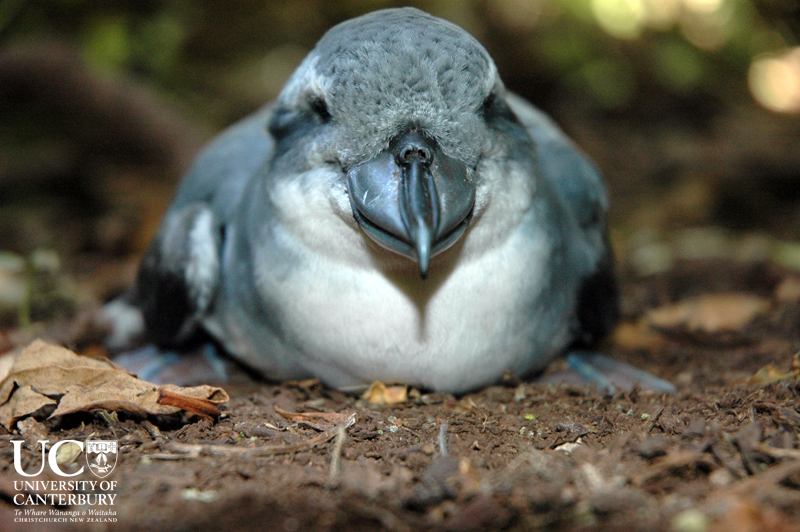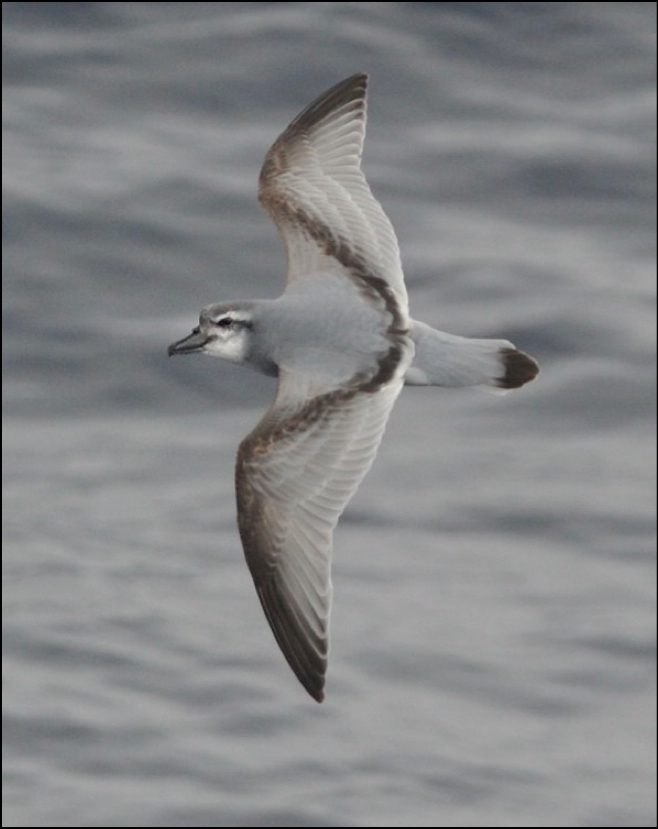
Pachyptila vittata
TAXONOMY
Procellaria vittata G. Forster, 1777, lat. 47°.
OTHER COMMON NAMES
English: Blue/broad-billed dove-petrel, long-billed/common
prion, icebird, whalebird; French: Prion de Forster; German:
GroЯer Entensturmvogel; Spanish: Pato-petrel Piquiancho.
PHYSICAL CHARACTERISTICS
9.8–11.8 in (25–30 cm); 5.6–8.3 oz (160–235 g); wingspan
22.4–26 in (57–66 cm). The largest prion, with a wide bill.
Dark patches form an “M” across back of outstretched wings.
DISTRIBUTION
Breeds in South Pacific on New Zealand’s South Island and on
Chatham Islands, and in the South Atlantic on Gough and
Tristan da Cunha Islands.
HABITAT
Marine, stays away from land except to breed. Breeds on barren
areas including lava fields, cliffs, and coastal slopes.
BEHAVIOR
Prions are social. Courtship displays are restricted to cover of
night or burrows. Pairs defend their burrows aggressively with
calls, posturing, or if the threat intensifies, with biting of each
other’s bill and neck.
FEEDING ECOLOGY AND DIET
Crustaceans (mostly copepods), squid, and fish. Feeds by hydroplaning
and by surface-seizing. Does not tend to follow
fishing boats. Feeds gregariously.
REPRODUCTIVE BIOLOGY
Breeding season starts in July or August. Forms tight colonies
of burrow nests. More than one pair may occupy one nest. The
egg is incubated for 50 days and fledging occurs after 50 days.
CONSERVATION STATUS
Not threatened.
SIGNIFICANCE TO HUMANS
None known.
Photo Gallery of - Broad-billed prion




 Animalia Life
Animalia Life